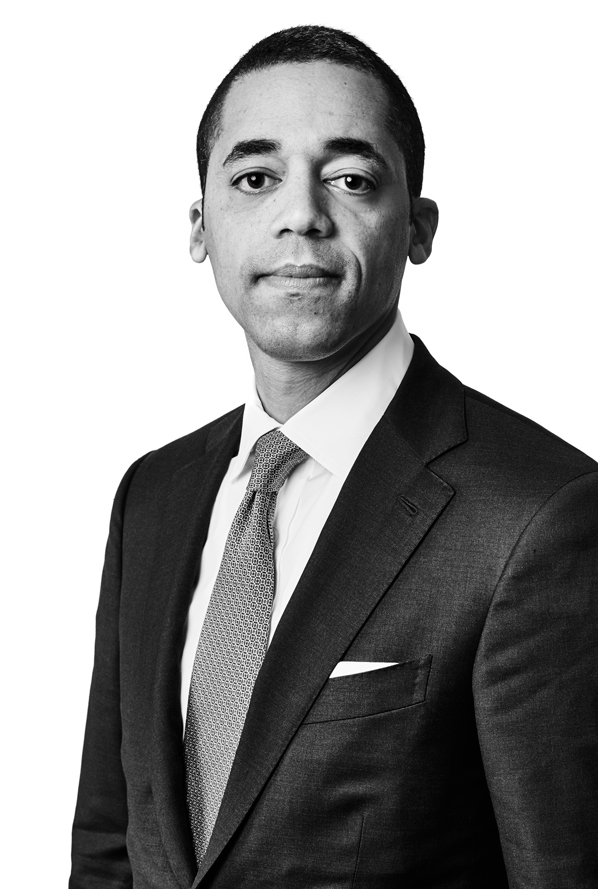Secondary Spotlight
‘The most important letters in PE are D-P-I’: Gerald Cooper on the 2024 Secondary Market Landscape
Revelation Partners caught up with Gerald Cooper, Head of the North America Secondary Advisory Practice at Campbell Lutyens, to discuss the 2024 fundraising and exit environment, the evolution of the GP-led secondary market, and considerations for GPs evaluating GP-led secondaries.

Secondary Spotlight is a new blog series where Revelation Partners interviews some of the leading secondary advisors in the industry. For the second iteration of the series, we sat down with Gerald Cooper, Head of the North America Secondary Advisory Practice at Campbell Lutyens. Campbell Lutyens is the largest independent private equity advisor with 250 people globally. Founded in 1988, they have three main businesses: Primary Fundraising, Secondary Advisory, and GP Capital Advisory. The following interview was edited for length and clarity.
RP: 2023 was the second worst year for private equity distributions in over 20 years according to Andrea Auerbach, head of global private investments at Cambridge Associates. In our world of healthcare, we see the same thing. According to SVB, there were only 23 IPOs last year (19 of which were in biopharma). Meanwhile, according to Pitchbook, sponsor exits in healthcare have been in decline since 2021. What are fund managers’ expectations for the exit environment in 2024?
GC: It’s been a challenging market for exits.

Last time we looked at the analysis as of June 2023, net LP liquidity was negative $450 billion. I suspect for full year 2023, it will be the most significant imbalance between capital calls and distributions that we’ve ever seen.
Gerald Cooper of Campbell Lutyens PHOTO: CAMPBELL LUTYENS
There’s been a dislocation between the bid and ask spread which has resulted in the M&A markets just getting locked up. This has been agitated by high interest rates which obviously makes it a challenge for the numbers to work. We’ve seen valuations in portfolio companies steadily rise over the past four quarters, so the bar on seller expectations continues to rise. As valuations remain high, this means only the best assets can trade. Sponsors are paying top dollar for quality assets, but there’s a logjam in the vast majority of the market.
The other factor to consider is that a lot of private equity funds are in the market trying to raise capital in a difficult environment. It creates a dynamic with two components to it. One is that GPs will be reluctant to mark down assets while they are fundraising and to the contrary, many will write up their portfolios. The other consideration is a more challenging fundraising environment over the past 18 months means many GPs don’t have a lot of new capital to invest so they become highly selective in terms of capital deployment.
RP: There are over 120 new healthcare investment firms that were started in the last 5 years – across both VC and PE. These firms have collectively raised over $60 billion. If you look at the DPI for many of these funds, however, it’s close to 0. Meanwhile, they’re going out to fundraise in the most challenging environment in years. What advice do you offer emerging fund managers facing this challenging environment?
GC: There is a lot of focus on DPI right now. We’ve heard from LPs the three most important letters in private equity now are “D-P-I”. People want cash.
Many GPs may still be focused on using unrealized gains as a way to market their funds, but it’s not what investors are centered on these days. What drives successful fundraising in this environment are exits that crystallize significant gains over cost and funds that have a high DPI ratio relative to other funds in their vintage.
I think the secondary market can be a pretty interesting tool to drive DPI. We’re in the process of completing a transaction that will move assets from a 2018 vintage fund into a multi-asset continuation vehicle. The secondary deal will increase DPI from 0.25x up to 0.75x with one transaction as opposed to multiple M&A transactions that have a lot of execution uncertainty and would take much longer to complete. There is technology in the secondary market that GPs can take advantage of to try to improve DPI even though the M&A markets aren’t there.
RP: At Revelation Partners, we are healthcare specialists. In almost every regard, healthcare lags behind other sectors. So, it’s not surprising to see that healthcare is lagging other sectors in its evolution of secondary transactions. We are, however, starting to see single-asset continuation funds around healthcare assets and multi-asset continuation funds for healthcare-dedicated funds. Are you seeing this as well? What is the universe of secondary funds participating in these healthcare-dedicated continuation funds?

GC: In 2023, 16% of CVs completed were in healthcare.
That’s a pretty high percentage. Healthcare was the second most active sector by transaction volume after industrials.
When we look across sectors that will continue to be in favor, healthcare is probably one of the more attractive sectors out there. Broadly speaking, it’s not subject to the same level of cyclicality as other industries and there are really good secular tailwinds that are easy for investors to understand. There are also a number of different angles to play within healthcare, whether it is services, devices, therapeutics or technology.
Most of the secondary capital pursuing traditional buyout healthcare opportunities is coming from generalist investors. The secondary market is unique as our capital is largely passive, unlike direct investment funds. Most secondary buyers are backing GPs with strong industry expertise and structuring deals to ensure that the alignment with those partners is tight. Additionally, companies that are producing cash flow can be underwritten using financial fundamentals, competitor analysis, research and references. Where an investment may sit within a highly complex subvertical, consultants and other industry experts may be called upon as a resource.
Where there does tend to be specialization is on the more venture or growth equity part of the market. In earlier stage investments where it’s not possible to complete fundamental financial analysis, we see secondary investors with more specific underwriting skills and technical backgrounds. There is greater risk in these deals and the outcomes are more variable. In order to really assess value, you need to be an expert and operate in that ecosystem.
RP: Similar to the evolution of private equity and venture capital firms towards industry specialization, we expect the secondary world will gravitate to specialized strategies. Are you seeing secondary firms developing sector expertise? Any in healthcare?
GC: We are seeing specialization at a high level in strategies such as infrastructure, credit, real estate and venture. There are not a lot of firms solely focused on sub-sectors such as healthcare. I see two reasons for this. First, the scale in terms of supply is not there yet. Second, many secondary investors like the ability to pursue investment themes on a more opportunistic basis.
Groups like Revelation Partners with a pure focus on healthcare are few and far between. Others will eventually get there but I don’t believe it is easy to build an investment firm that has both deep domain expertise and understands the nuances of investing in secondaries. As the market invariably grows, I suspect new investors will dedicate the time, effort and resources to do it, but I think we are at least a few years away from this.

RP: How are you seeing the generalist secondary firms navigate the regulatory / reimbursement landscape of these healthcare deals?
GC: Secondary funds typically have a large number of relationships with both industry experts and GPs to call on for diligence support. Also, because their portfolios are highly diversified, they have fairly strong data to map when diligencing specific risks within a sector. Finally, since secondary investors are passive, they are to some extent relying on the GP that they are partnering with to help them navigate some of these technical risk factors.
RP: Historically, continuation funds have focused on large-cap private equity firms (e.g. TPG, Blackstone, Hellman & Friedman, Warburg Pincus). We are, however, starting to see middle-market private equity firms increasingly explore continuation funds. Are you seeing the shift of continuation funds down market?
GC: When continuation funds were relatively uncommon, buyers gravitated towards the largest names as those were viewed as the safest place to make concentrated investments. Additionally, there were only a handful of investors that could lead a continuation fund transaction. Most groups wanted to participate in the syndicate as a co-investor. Today’s market has evolved, with many of the investors that used to co-invest now wanting to lead. However, these investors are not able to speak for large bite sizes, which means they have gone down market in terms of size to focus on middle market and lower middle market deals.
The other factor to consider is that there are more middle market sponsors than large cap groups. As such, the pool of opportunity is going to be much greater at the smaller end of the size spectrum. Middle market GPs are now very sophisticated with respect to continuation fund technology. Furthermore, many middle market sponsors are sitting on trophy assets that have grown quickly and still have the ability to double or triple EBITDA. Secondary buyers have picked up on this phenomenon and are actively pursuing these opportunities.
RP: We’re generally seeing discounts at 30-35% for secondary transactions including continuation funds. Is that what you’re seeing?
GC: It definitely varies. The vast majority of continuation funds are being done within the 10% discount to par range, but those are mainly buyout opportunities. Situations pricing in the 30 – 35% discount range would be in the venture or growth equity space. There is still a significant risk premium for early-stage businesses as the shake out between winning and losing portfolio companies is ongoing. Additionally, this end of the market is particularly starved for capital so secondary buyers can charge deeper discounts as competitive dynamics are in their favor.
RP: What do you recommend for fund managers looking to learn more about secondary solutions?
GC: The market is dynamic so it is important for fund managers to get a fresh perspective on buyer appetite, pricing, terms and dry powder.
I believe 2024 is going to be a really interesting time for fund managers to explore secondary solutions. We are coming off of a record year for fundraising and secondary investors are now sitting on approximately $174 billion of dry powder.
The macroeconomic outlook is more stable and investors are willing to take on greater risk than last year. LPs have never been more receptive to secondary solutions as they are today since other options for liquidity remain scarce.
My recommendation to fund managers is to have an advisor involved in their continuation fund initiatives and other GP-led solutions. These transactions have conflicts and an advisor is critical in demonstrating that negotiations are “arm’s length” and value maximizing. There are a lot of new advisors that have emerged in the secondary market over the past couple of years. GPs should recognize that a traditional M&A banker may not have all the skills necessary to manage a complex secondary process. These transactions require seasoned professionals with relevant experience, expertise and investor relationships, which are all critical to navigating the nuances of a continuation fund. Ultimately, secondary deals can be highly accretive to a GP’s franchise, but they need to be executed well.
